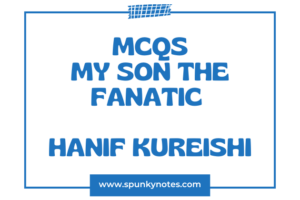
Q. Discuss The Sound and The Fury as a tragic novel.
Introduction
The Sound and The Fury” by William Faulkner paints a tragic portrait of the Compson family. Set in the declining Southern aristocracy, it explores individual tragedies. Each character struggles with their heartbreak. These tragedies cast a gloomy shadow over the family.
As a tragic novel, “The Sound and the Fury” embodies tragedy in several ways:
Mr Compson: Tragedy of Abandonment and Surrender
Mr Compson fails to guide his children, leaving them alone to grapple with their troubles. His discussions with Quentin were filled with nihilistic views. It offers more confusion than comfort, exacerbating his son’s inner turmoil.
Mr Compson’s surrender to his pessimistic philosophy and dependence on alcohol leads him to neglect his family. It causes an irrevocable rift in the family fabric. He leaves his children without parental guidance, and his wife wallows in self-pity.
His tragic flaw lies in his surrender to despair and his abandonment of his duty as a father. Ultimately, his life and untimely death from alcoholism reflect the devastation caused by his surrender to his vices and abandonment of his family. His tragedy dramatically contributes to the collective tragedy of the Compson family.
Mrs Caroline Compson: Tragedy of Self-Absorption
Caroline Compson, the matriarch in Faulkner’s “The Sound and The Fury,” epitomizes the tragedy of self-absorption. Her character is dominated by a fixation on her alleged ailments and a constant lament about her aristocratic lineage’s fall.
Her intense self-pity not only engulfs her but also constructs a barrier separating her from her family. As she plunges further into her ocean of personal problems, she unwittingly lets go of her anchor, her responsibilities as a mother.
In the whirlpool of her worries, she becomes oblivious to the emotional needs of her children. They really want her care and comfort, but she’s too caught up in her problems to pay them attention. Instead of being there to love and support them, she’s too focused on herself, making them feel even more lonely and upset.
Caroline Compson is tragically blind to the chaos around her, consumed by her self-centred world. She fails to recognize her daughter Caddy’s rebelliousness, Quentin’s profound despair, Jason’s burgeoning cruelty, or Benjy’s quiet suffering. Her inability to see beyond her self-created illusions amplifies the family’s disintegration.
Her life painfully reflects the destructive power of self-absorption. As she retreats further into her fortress of self-pity, she overlooks her critical role as a mother. This neglect not only leaves a gaping hole in her family’s emotional fabric but also significantly fuels the fire of the family’s tragic downfall.
Caroline Compson’s character highlights the tragic consequences that arise when one becomes a prisoner of one’s self-centred concerns.
Quentin Compson: Tragedy of Obsession and Honor
Quentin Compson, the eldest Compson child in Faulkner’s “The Sound and The Fury,” embodies the tragedy of obsession and honour. As the family’s intellectual beacon, Quentin struggles with complex notions of love, duty, and the weight of familial honour.
His obsession with his sister Caddy’s sexual independence becomes his tragic flaw, driving him towards mental torment and eventually suicide.
Quentin’s Southern upbringing instils in him a rigid sense of honour, making Caddy’s loss of virginity an intolerable breach of the family’s dignity. Quentin obsesses over her actions, desperately seeking ways to restore the compromised honour.
He becomes so desperate that he starts having a very strange and disturbing thought. Quentin begins to imagine himself as the one who dishonours Caddy because he thinks this will protect her from people judging her.
However, his struggle with these burdensome ideals and obsessive thoughts pushes him further into despair. He finds himself unable to reconcile with the reality of Caddy’s actions, driving him into unbearable mental anguish.
Quentin’s life becomes a tragedy marked by the conflict between his stringent ideals and harsh reality. His ultimate decision to drown himself in the Charles River signifies his tragic surrender to his obsessions. Quentin Compson’s life is a mournful testament to the destructive power of obsession and misguided honour.
Caddy Compson: Tragedy of Rejection and Defiance
Caddy Compson, the family’s only daughter in Faulkner’s “The Sound and The Fury,” symbolizes the tragedy of defiance and rejection. Deprived of parental affection, Caddy seeks love outside her family, a defiance of the societal norms of her time.
In her pursuit of love and happiness, she inadvertently became pregnant without entering into marriage. This caused a big scandal for her family. Caddy’s defiance of the societal expectations of a Southern woman of her era marks her as an outcast.
Because of what she did, her family kicked her out. She also lost her only comfort – her relationship with her brothers. Due to her choices, she finds herself tragically isolated, bearing a heavy price for her relentless pursuit of affection.
Her life becomes a tragic tale of a woman seeking love in a judgmental society, only to be punished for her bold attempts to find happiness. Despite her physical absence in the novel, Caddy’s presence is omnipresent, and her expulsion is a recurring theme of loss and rejection.
Her story underscores the tragedy of a woman rejected by her society and family for daring to defy conventions in her search for love.
Benjy Compson: Tragedy of Innocence and Confusion
Benjy Compson, the mentally disabled youngest son in Faulkner’s “The Sound and The Fury,” embodies the tragedy of innocence and confusion.
Incapable of understanding the complex realities around him, Benjy perceives the world in a unique, disjointed manner.
His tragedy lies in his innocence caught amid the tumultuous dynamics of the Compson family. He is the silent observer of his family’s gradual disintegration, unable to comprehend his experiences.
His only source of comfort is his sister Caddy, whose scent of trees and caring touch represents a sense of security for him.
Caddy’s eventual departure, however, leaves Benjy bereft and lost. Her absence plunges him into a deeper state of confusion and despair.
He mourns her loss, unable to understand why she has disappeared from his life. His uncomprehending suffering amplifies the tragedy of his existence.
Benjy’s life is a poignant illustration of an innocent trapped in a world of despair and confusion, incapable of understanding the reasons for his sorrow.
His character exemplifies a unique tragedy in the novel, capturing the heart-wrenching despair of innocence marred by circumstances beyond its comprehension.
Conclusion
The Sound and the Fury is a tragic story that shows the fall of the Compson family as they fail to adapt to changing times. The struggles of Benjy, Quentin, Jason, and Caddy reveal personal and emotional hardships that lead to the family’s decline.
Their pain and loss reflect the breakdown of traditional Southern values after the Civil War. Faulkner’s fragmented storytelling mirrors the confusion and chaos within the family.
The novel examines time, memory, and family themes, showing how personal failures and a changing world can lead to destruction. It is a powerful depiction of loss and human suffering.

